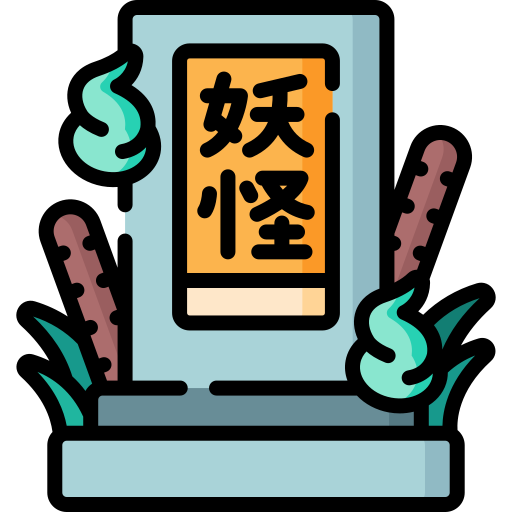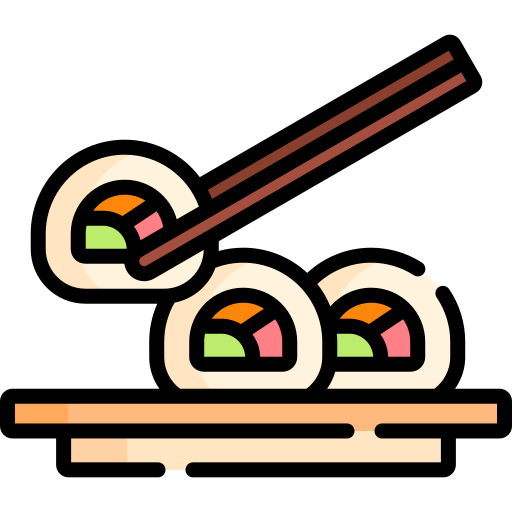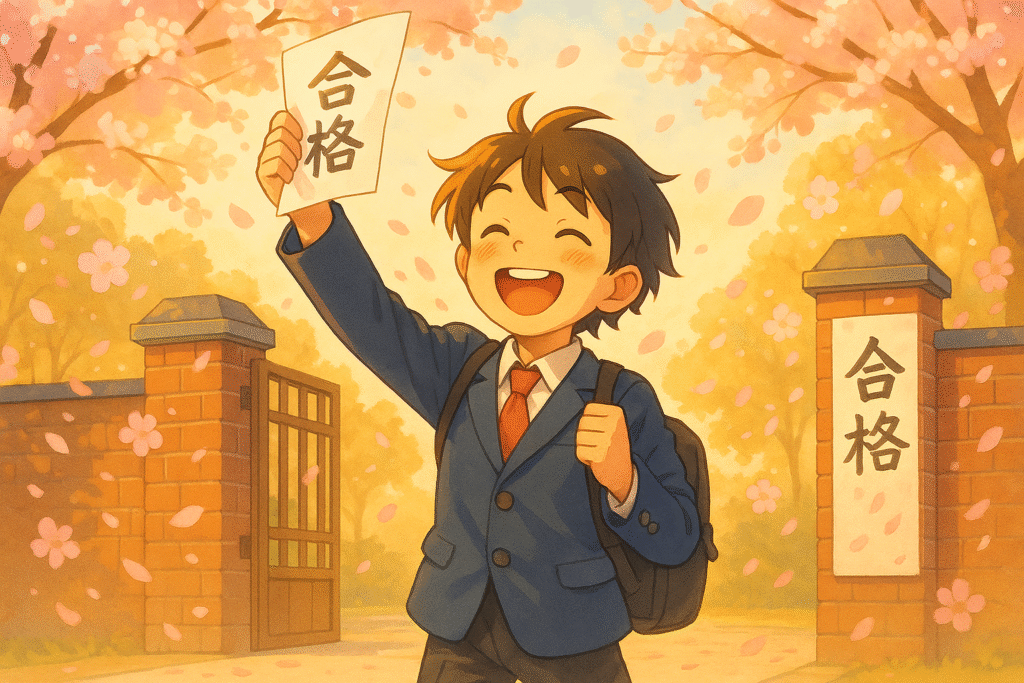Ever found yourself mindlessly scrolling through Netflix, trying to justify your binge-watching as “educational”? Well, what if I told you that watching anime could legitimately help you learn Japanese? That’s right—your Netflix addiction might actually be the language-learning boost you’ve been searching for!
As someone who’s gone from fumbling through basic greetings to confidently navigating conversations in Japanese, I can attest that the best anime to learn Japanese on Netflix offers an immersive, entertaining pathway to language acquisition that textbooks simply can’t match.
Want to start learning Japanese right away?
Access our Free Study Guides with grammar explanations, vocabulary lists, and study tips. All at no cost.
Why Anime Is Your Secret Weapon for Japanese Fluency
Before diving into our carefully curated anime Netflix list, let’s talk about why anime is such a powerful tool for language learners. Unlike traditional study methods that can feel dry and disconnected from real-world usage, anime provides:
- Authentic language patterns used by native speakers
- Visual context that helps you connect words with meanings
- Cultural insights that textbooks rarely capture
- Emotional engagement that makes vocabulary stick
- Varied speech styles from casual to formal
When you watch the best anime to learn Japanese on Netflix, you’re not just passively consuming entertainment—you’re training your ear to recognize natural speech patterns, common phrases, and the rhythm of the language. It’s like having a fun, engaging tutor available 24/7!
“The best way to learn a language is to fall in love with the culture it comes from. Anime offers that perfect blend of entertainment and education that keeps you coming back for more.”
How to Maximize Your Japanese Learning with Netflix Anime
Before jumping into our recommendations for the best anime on Netflix for language learners, let’s discuss how to transform your binge sessions into effective study time:
- Start with Japanese audio and English subtitles to get comfortable with the sounds
- Progress to Japanese subtitles once you’ve built some familiarity
- Finally, challenge yourself with Japanese audio only
💡 Pro Tip: Use browser extensions like Lingopie that offer interactive subtitles, allowing you to click on words for instant translations and adding them to personalized vocabulary lists!
Now, let’s explore the top 10 anime that will supercharge your Japanese learning journey while keeping you thoroughly entertained.
10 Best Anime to Learn Japanese on Netflix for Every Level
1. Drifting Home (漂流家族) – Perfect for Beginners
![Drifting Home anime still]
Drifting Home offers the perfect entry point for beginners venturing into anime for beginners Netflix territory. This touching story follows childhood friends Kosuke and Natsume who, along with their classmates, find themselves literally adrift when an abandoned apartment complex mysteriously begins floating in the ocean.
Why It’s Great for Japanese Learners:
- Clear, straightforward dialogue perfect for beginners
- Everyday vocabulary related to friendship, school, and family
- Natural conversational Japanese between young characters
- Simple grammar structures that reinforce basic patterns
Language Sample: “友達になってくれてありがとう” (Tomodachi ni natte kurete arigatō) Translation: “Thank you for becoming my friend.”
This heartwarming film doesn’t just teach you Japanese—it immerses you in themes of friendship, nostalgia, and coming-of-age that resonate across cultures.

2. Fullmetal Alchemist (鋼の錬金術師) – For Building Intermediate Skills
If you’re ready to level up your Japanese, Fullmetal Alchemist offers slightly more complex language while keeping you hooked with its compelling storyline. This beloved series follows brothers Edward and Alphonse Elric as they search for the Philosopher’s Stone to restore their bodies after a failed alchemical experiment.
Why It’s Great for Japanese Learners:
- Rich vocabulary related to science, ethics, and philosophy
- More complex sentence structures to challenge intermediate learners
- Various speech styles from formal to casual
- Emotional dialogue that helps you connect language with feelings
Language Sample: “等価交換の原則だ。何かを得るには同等の代価が必要になる。” (Tōka kōkan no gensoku da. Nanika o eru ni wa dōtō no daika ga hitsuyō ni naru.) Translation: “It’s the principle of equivalent exchange. To obtain something, something of equal value must be lost.”
This philosophically rich series will push your Japanese comprehension while drawing you into its captivating world of alchemy, brotherhood, and moral dilemmas.
3. A Whisker Away (泣きたい私は猫をかぶる) – For Natural Everyday Speech
A Whisker Away presents an enchanting story about Miyo Sasaki, a girl who transforms into a cat to get closer to her crush. This charming film is perfect for learners looking to master everyday Japanese conversations.
Why It’s Great for Japanese Learners:
- School-related vocabulary useful for daily life
- Teen slang and expressions used by young Japanese people
- Natural, flowing dialogue that mimics real conversations
- Clear pronunciation ideal for improving listening skills
Language Sample: “本当の自分を見せるのは怖いよね” (Hontō no jibun o miseru no wa kowai yo ne) Translation: “It’s scary to show your true self, isn’t it?”
If you’re interested in both learning Japanese and understanding more about Japanese youth culture, this film offers valuable insights into both while telling a heartwarming story about identity and acceptance.
4. Flavors of Youth (詩季織々) – For Cultural Context
Although set in China, Flavors of Youth is a Japanese anime anthology film that explores themes of nostalgia, growing up, and the passage of time through three beautiful, interconnected stories.
Why It’s Great for Japanese Learners:
- Descriptive language about food, fashion, and memories
- Poetic expressions that expand your vocabulary
- Diverse narrative styles across the three stories
- Emotional context that helps vocabulary retention
Language Sample: “思い出は時間と共に薄れていくけど、心に残る味は決して消えない” (Omoide wa jikan to tomo ni usureteiku kedo, kokoro ni nokoru aji wa kesshite kienai) Translation: “Memories fade with time, but the taste that remains in your heart never disappears.”
This visually stunning anthology provides not just language practice but also cultural insights that deepen your connection to both the language and the storytelling traditions behind it.
5. Ride or Die (彼女) – For Advanced Learners
For those ready to tackle more challenging content, Ride or Die offers a gripping narrative that pushes social boundaries while exposing learners to mature, natural Japanese dialogue. This film follows two women navigating a complex relationship after one commits murder to protect the other.
Why It’s Great for Japanese Learners:
- Advanced vocabulary related to relationships and emotions
- Natural speech patterns with realistic pacing and intonation
- Colloquial expressions rarely found in textbooks
- Contemporary Japanese as it’s actually spoken today
Language Sample: “愛しているからこそ、自由にしてあげたい” (Aishite iru kara koso, jiyū ni shite agetai) Translation: “Because I love you, I want to set you free.”
While this film contains mature themes, it provides advanced learners with authentic dialogue that reflects how modern Japanese adults actually communicate—something difficult to find in more sanitized learning materials.
If you’re enjoying this approach to language learning through media, you might also be interested in our guide on how to learn Japanese online through anime and manga, which expands on many of these concepts!
6. A Family (ヤクザと家族) – For Specialized Vocabulary
A Family offers a fascinating glimpse into the changing world of yakuza (organized crime) in Japan. This film follows a yakuza member navigating the decline of traditional crime syndicates due to new anti-gang laws.
Why It’s Great for Japanese Learners:
- Specialized vocabulary related to crime, family, and honor
- Male speech patterns that differ significantly from standard textbook Japanese
- Formal and informal language showing hierarchy and respect
- Cultural context for understanding Japanese social structures
Language Sample: “義理と人情、どっちが大事かなんて選べるわけがない” (Giri to ninjō, docchi ga daiji ka nante eraberu wake ga nai) Translation: “One cannot choose between duty and human feeling.”
This film helps learners understand not just the language but the cultural concepts of obligation, loyalty, and family that deeply influence Japanese communication styles across all contexts.
7. We Couldn’t Become Adults (大人になれなかった僕たちへ) – For Time-Period Language
This non-linear narrative explores the life of Makoto as he reflects on his past relationships and career journey, moving between 1995 and 2020. It’s perfect for learners who want to understand how Japanese has evolved over recent decades.
Why It’s Great for Japanese Learners:
- Time-specific language showing how Japanese has changed over 25 years
- Workplace vocabulary useful for professional contexts
- Relationship terminology across different life stages
- Reflective language for expressing regret, nostalgia, and growth
Language Sample: “人生は選んだ道よりも、選ばなかった道のほうが気になるものだ” (Jinsei wa eranda michi yori mo, erabanakatta michi no hō ga ki ni naru mono da) Translation: “In life, we tend to wonder more about the paths we didn’t take than the ones we did.”
This film helps intermediate to advanced learners understand the nuances of expressing complex emotions and reflections—skills that elevate language proficiency from functional to truly expressive.
Love Japan? Stay in the Loop!
Hi, I’m Jesse! Join 100+ learners and get my best Japanese learning tips straight to your inbox.
8. Mother (マザー) – For Family Dynamics
Mother presents a powerful story about a woman and a neglected boy navigating difficult circumstances together. This emotionally charged film provides valuable insights into Japanese family dynamics and social issues.
Why It’s Great for Japanese Learners:
- Vocabulary related to family relationships and social services
- Emotional language for expressing care, concern, and conflict
- Different levels of formality depending on social contexts
- Natural dialogue between adults and children
Language Sample: “守りたいものがあるから、強くなれる” (Mamoritai mono ga aru kara, tsuyoku nareru) Translation: “Having something you want to protect makes you stronger.”
This film helps learners understand the language of care and protection while also providing insights into Japanese social structures and family dynamics.
9. Love Like the Falling Petals (恋は桜花のように) – For Romantic Language
This touching romantic drama follows a young hairdresser and her romance with an aspiring photographer, which takes a tragic turn when she’s diagnosed with a rare disease that ages her rapidly.
Why It’s Great for Japanese Learners:
- Romantic vocabulary and expressions of affection
- Medical and health-related terminology
- Emotional language for discussing hopes, fears, and loss
- Poetic expressions related to beauty and transience
Language Sample: “君と出会えたことが、僕の人生の奇跡だよ” (Kimi to deaeta koto ga, boku no jinsei no kiseki da yo) Translation: “Meeting you was the miracle of my life.”
For those interested in mastering the language of emotions and relationships, this film provides authentic examples of how Japanese people express deep feelings—something often missing from traditional learning materials.

10. Homunculus (ホムンクルス) – For Psychological Terminology
This psychological thriller follows a man who undergoes an experimental procedure that awakens his sixth sense, allowing him to see the distortions in people’s personalities.
Why It’s Great for Japanese Learners:
- Psychological and philosophical vocabulary
- Abstract concepts expressed in Japanese
- Internal monologue showing thought processes
- Metaphorical language that extends beyond literal meanings
Language Sample: “人の心の中は、自分が思っているよりもずっと複雑だ” (Hito no kokoro no naka wa, jibun ga omotte iru yori mo zutto fukuzatsu da) Translation: “The inside of a person’s heart is much more complex than you think.”
For advanced learners looking to understand how Japanese expresses abstract concepts and psychological states, this challenging but rewarding film offers valuable linguistic insights.
Tips for Learning Japanese Through Anime Effectively
To maximize your learning while enjoying the best anime to learn Japanese on Netflix, consider these proven strategies:
- Repeat after characters: Pause and mimic phrases to improve pronunciation
- Keep a vocabulary journal: Write down new words and phrases with context
- Focus on one show at a time: Deep dive into the language of a single anime before moving on
- Join anime discussion groups: Practice your Japanese by discussing your favorite shows
- Use what you learn in real conversations: Apply anime vocabulary in language exchange sessions
For learners who want to take their Japanese studies beyond Netflix, our guide on how to learn Japanese without a teacher provides additional self-study strategies that complement what you learn through anime.
Essential Japanese Grammar Patterns Found in Anime
One of the benefits of learning through the best anime to learn Japanese on Netflix is exposure to common grammar patterns in context. Here are some patterns you’ll frequently encounter:
- ~ている (te iru): Expressing ongoing actions Example: 食べている (tabete iru) – “I am eating”
- ~たい (tai): Expressing desires Example: 行きたい (ikitai) – “I want to go”
- ~なければならない (nakereba naranai): Expressing obligation Example: 勉強しなければならない (benkyō shinakereba naranai) – “I must study”
- ~そうです (sō desu): Hearsay or appearance Example: おいしそうです (oishi sō desu) – “It looks delicious”
Understanding these patterns as they appear naturally in dialogue helps cement them in your memory far more effectively than drilling exercises alone.
Frequently Asked Questions About Learning Japanese Through Anime
Can you really learn Japanese just by watching anime?
While anime alone isn’t enough to achieve fluency, the best anime to learn Japanese on Netflix provides excellent supplementary practice that enhances traditional study methods. Anime helps with pronunciation, listening comprehension, vocabulary acquisition, and cultural understanding.
What’s the most effective anime watching strategy for beginners?
Start with simple slice-of-life anime that features everyday conversations and clear speech. Watch first with English subtitles to understand the context, then with Japanese subtitles, and finally challenge yourself with Japanese audio only as your skills improve.
How long does it take to learn Japanese through anime?
Learning timelines vary by individual, but most learners report significant improvements in listening comprehension within 3-6 months of regular anime viewing combined with other study methods. Reaching conversational fluency typically takes 1-2 years of consistent practice.
Which is better for learning: subbed or dubbed anime?
For Japanese language learning, always choose Japanese audio (subbed) rather than dubbed versions. The original Japanese voice acting provides authentic pronunciation, natural speech patterns, and cultural nuances that are essential for language acquisition.
How can I retain vocabulary from anime more effectively?
Create flashcards with screenshots from scenes to provide visual context, and include the sentence where you heard the word. Review these regularly using spaced repetition methods to maximize retention.
Ready to Start Your Anime-Powered Japanese Journey?
The best anime to learn Japanese on Netflix offers an entertaining and effective pathway to language mastery that complements traditional study methods. By immersing yourself in these captivating stories, you’ll develop not just language skills but also cultural understanding that brings your Japanese to life.
Remember, consistency is key—even 20-30 minutes of attentive anime watching per day can dramatically improve your listening comprehension and vocabulary over time.
For those looking to take their Japanese studies to the next level, check out our comprehensive resources page featuring free guides and premium learning tools designed to accelerate your progress.
So grab your remote, fire up Netflix, and turn your entertainment time into valuable language learning opportunities with these outstanding anime selections!
Have you tried learning Japanese through anime? Share your experience and favorite shows in the comments below!
Connect with Fellow Japanese Learners!
Ask questions, get study tips, and take part in weekly challenges. Join a community of motivated learners exploring both the language and culture of Japan!




